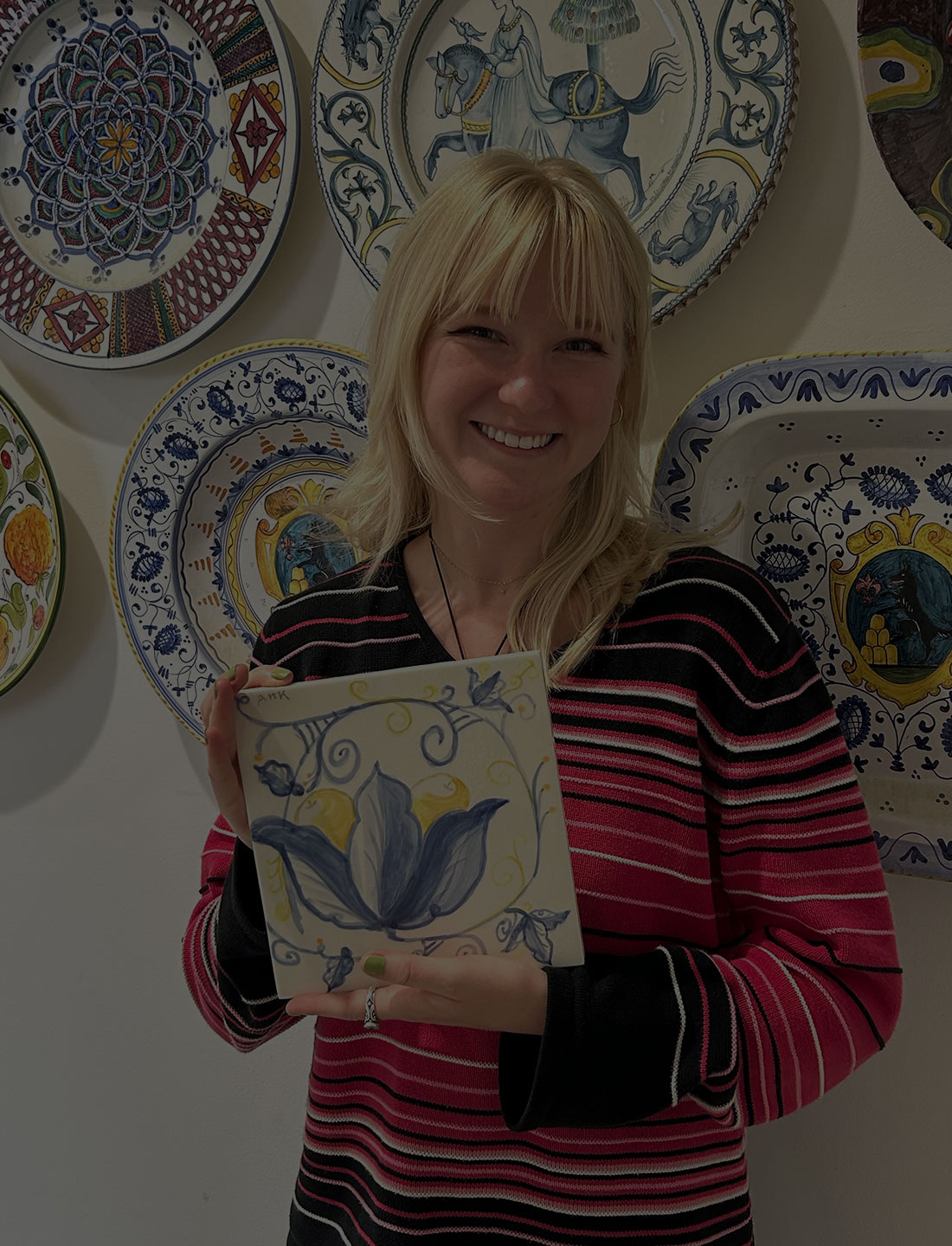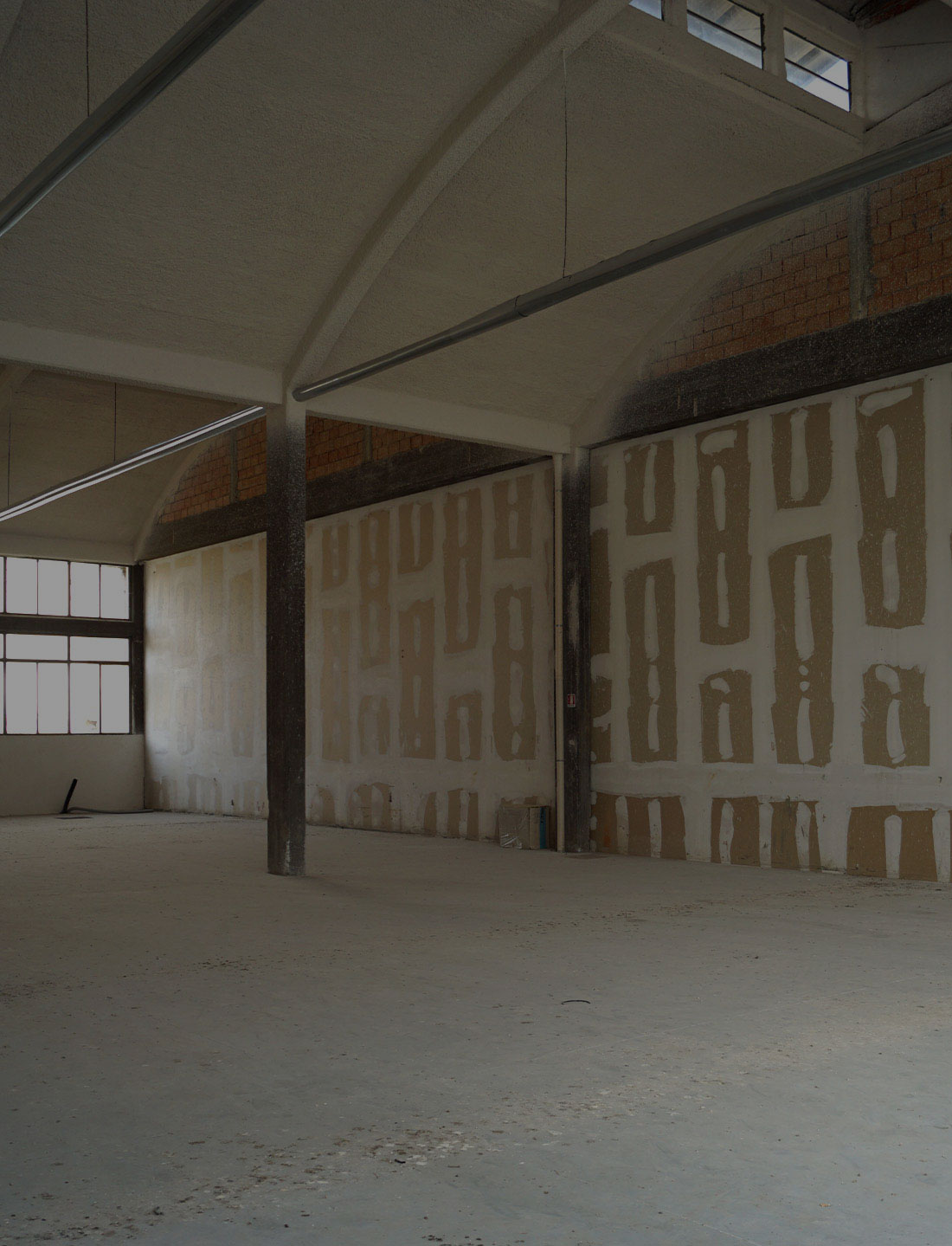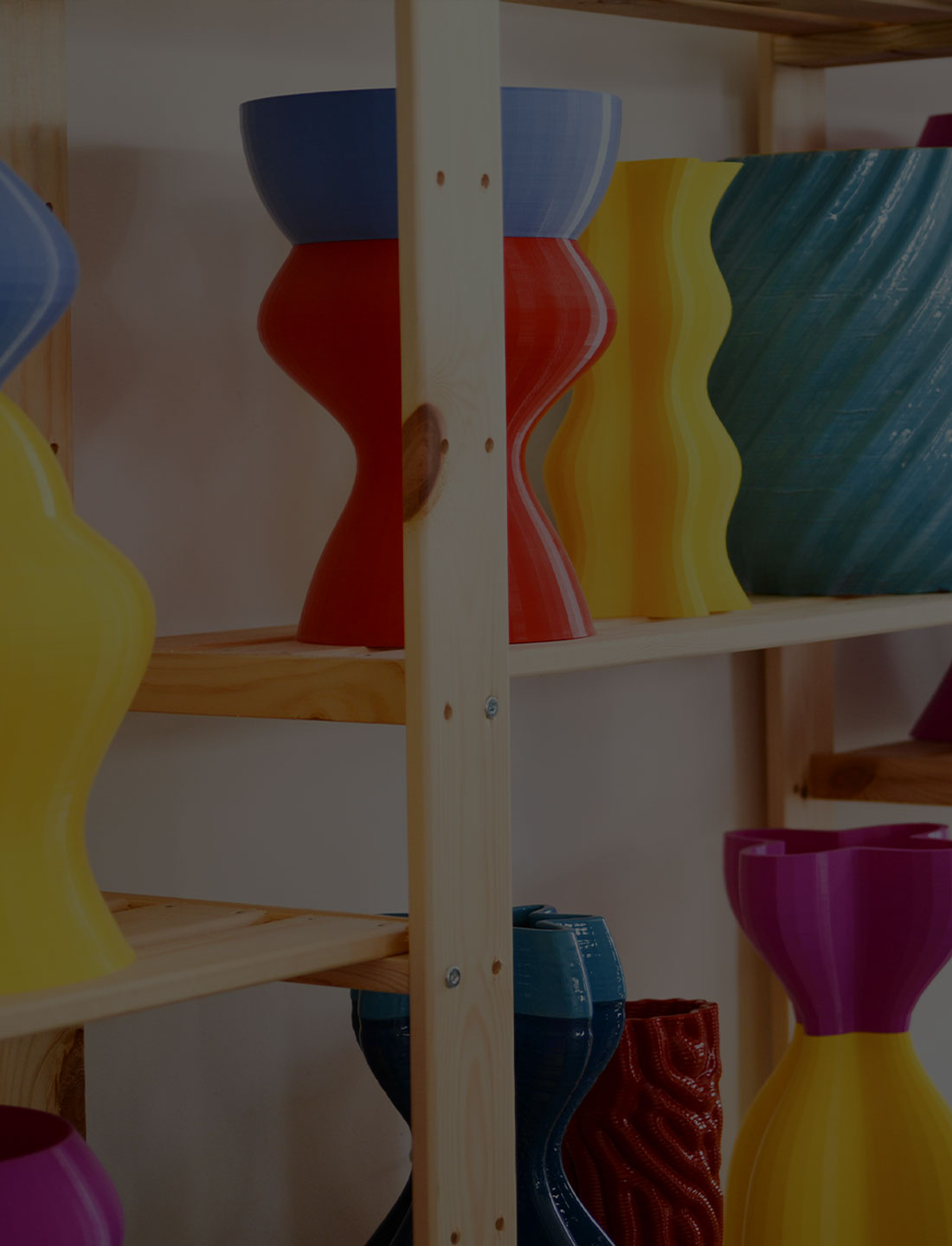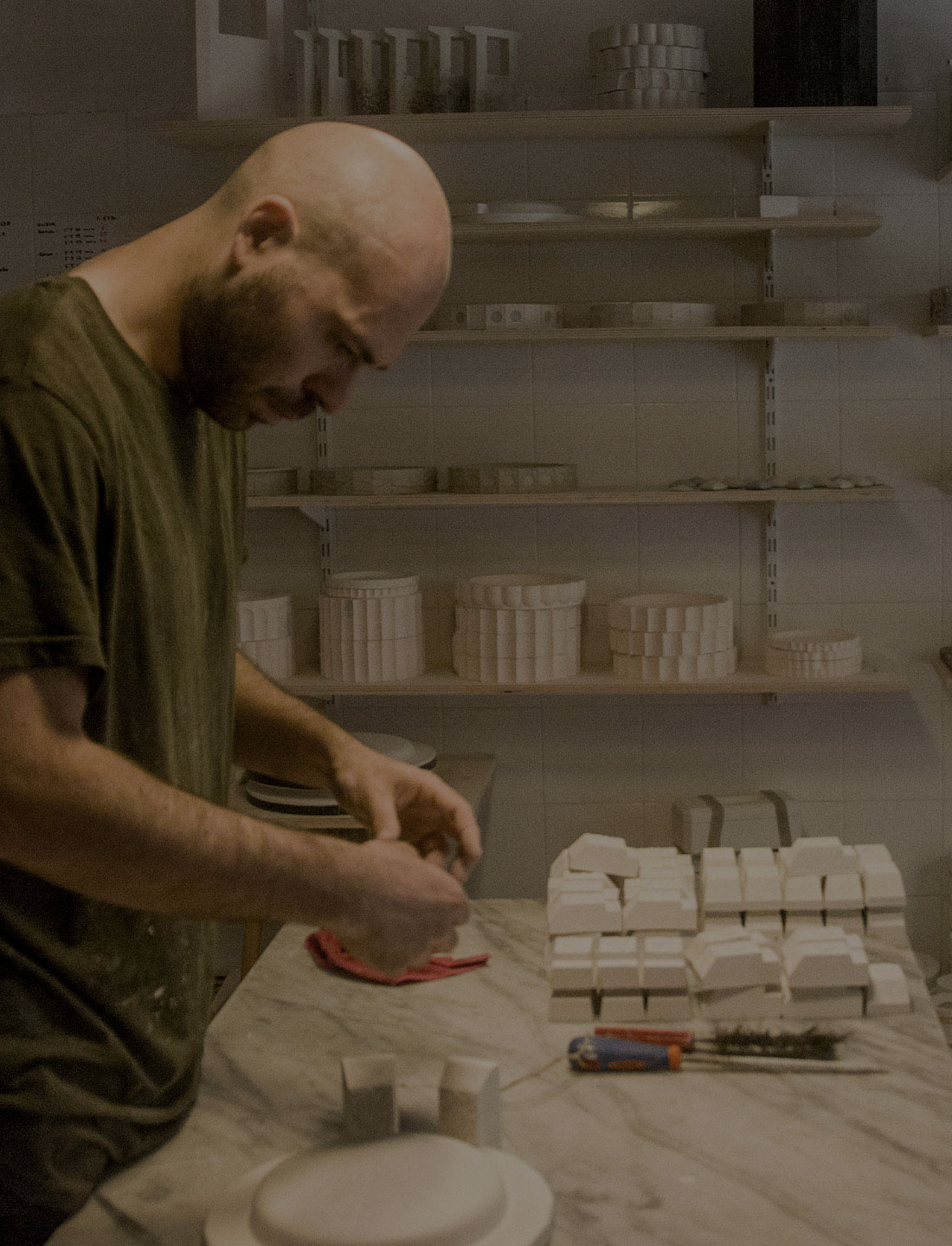
A day at the Experimental Ceramics Center
of Audrey Kearns
On April 9, I had the privilege of participating in a ceramics workshop at the School of Ceramics in Montelupo Fiorentino. As an Art History student at Stanford, I had the unique opportunity to study abroad, specifically in Florence and to intern at the School.
Montelupo, a small Tuscan town just thirty minutes from Florence, has been renowned for its pottery production since the 13th century. The School is within the Experimental Ceramics Center and is located in the former Colorobbia color factory, where the Bitossi Museum Archive is also located. On the morning of my fourth day, the school was full of Danish students eager to learn the art of working clay on the potter's wheel and painting designs on small pieces of pottery, and I, as an English language learner, participated in this activity with them.
The Danish students arrived at 9 a.m. and were divided into three groups. The first group started with the potter's wheel, the second group modeled clay with their hands, and the third group tried decorating small white ceramic tiles. The modeling and decorating instructors were fluent in English, and an interpreter was present for the potter's wheel session. Each session lasted from an hour to an hour and a half, a duration that initially seemed a bit daunting.
However, as the session progressed, this duration allowed each student to gain a deep sense of satisfaction. The tranquility of handmade pottery allows for total concentration, and time flies by. I started with the group at the potter's wheel, and my blond hair and confused look allowed me to integrate well with the Danish group. Each student had a predetermined station with a large cylinder of fresh clay, a bowl of water, a sponge, a spatula and the wire to cut the clay. I sat on the lathe in the 'corner of the room, and put my feet on the pedals to control its speed.
Afterwards, we gathered around the instructor demonstrating how to attach the clay to the wheel and the initial stages of modeling the object. Mauro, a master of his craft, passionate about his art, with his thundering voice and effervescent joy made each student seem at ease and inspired. The ease of his movements and the dexterity of his fingers suggested a lifetime of manipulating clay, and after the demonstration he gave, I thought it was very simple to create an object on the potter's wheel. After less than three minutes, he had produced a beautiful curved jug.
I immediately faced more difficulties than expected with my clay. I tried to shape it with my hands but ended up in vague shapes of lumpy, irregular bowls. However, I did not want to give up, nor would Mauro allow me to. The large amount of clay available allowed me to work continuously and restart the project several times without fear. Mauro spent the hour walking between students, advising and guiding us in creating the object.
Initially he paid few compliments, but in the end, the ones he gave us made us feel even more special. And it was for good reason: they all improved dramatically, producing bowls or glasses, to present to their peers, of which they were quite proud. Even I, who had less experience than most of the younger students, came away with two bowls that I couldn't wait to take home.
The next part involved a delicate blue, black and yellow painted decoration typical of Montelupo majolica: a brightly painted glazed ceramic with a white background produced mainly in the 15th century in parts of Italy.
We sat around the tables and each was assigned a white tile and brushes. Although students could paint anything, our instructor Veronica encouraged us to paint a simplified version of the traditional Montelupo decoration with blue flowers, spiral vines and yellow fruit. Other completed vases and plates were placed on the tables between us and served as examples and models. We began sketching in pencil, continuing with thin brushes to paint swirling lines with diluted blue paint. Veronica, like Mauro, followed each student, gently encouraging them to add more water to their own or to relax their hand as the brush deposited paint, forming vine shoots. The teacher helped me define the outline of my flower and introduce shadows in the middle each petal. Then she demonstrated how to accurately paint the Montelupo spiral.
Once finished, the tiles were fired, allowing the colors to intensify from the raw piece. Before we could switch groups, I had to take the train back to Florence for my afternoon Italian class and was unable to participate in the modeling portion. Although I only attended the workshop to observe the preferences of the English language learners, I was so proud of my potties that I showed the photo I had taken to many of my classmates. The workshop went well and everything ran smoothly, mostly thanks to the three instructors who had to keep more than thirty teenagers at bay. The students were attentive and focused and had no difficulty with the language thanks to the skill of the translator.
Despite different skills and experience levels, each student produced impressive final results. There was a deep sense of satisfaction in seeing the final product of handmade work, and everyone proudly inscribed their initials on the finished pots. The students went home with handmade pots, more hands-on experience with ceramics, and a better awareness of Montelupo's importance as the ceramic capital of Tuscany. Importantly, the kids spent the time laughing, clearly having fun. I was grateful for the introduction to pottery and more aware of the difficulty of the art form and the skill needed to work with clay that can sometimes be taken for granted. I found Montelupo through Stanford's internship program in Florence, which began a partnership with the City of Montelupo after students participated in a ceramics class during the winter that they later remembered as a highlight of their study abroad experience.
Visiting Montelupo is an experience not to be missed, especially for American students. The city walls studded with extraordinary ceramics and the sleepy streets are a respite from busy Florence. There are also many opportunities to learn pottery making and painting. In addition, the Museum of Ceramics, a short walk from the center, houses three floors of ceramics produced from the late 13th century to the 18th century. Anyone interested in historical crafts or Tuscan ceramics should take the opportunity to visit beautiful Montelupo.
2 Comments
-
Charles Holland
Malesuada fames ac turpis egestas enas pharetra convallis. Cras pulvinar mattis nunc sed blandit.
POST COMMENT
Related Posts
Ceramics no borders
The school also offers many study opportunities for in-house artists
41 years of activity
In 2024, the School of Ceramics turned 41 years old.
The 3d and its personalities!
Double interview with Mauro and Simone
Four days of ceramics
Point of reference for Italian and European ceramics.







Aiden Moore
Egestas sed sed risus pretium quam vulputate dignissim suspendisse in. Pharetra sit amet aliquam id diam maecenas ultricies mi.